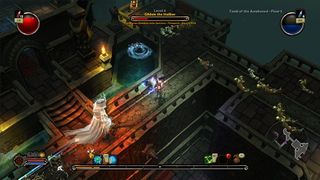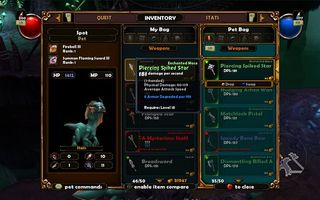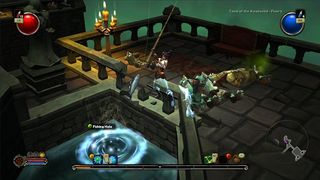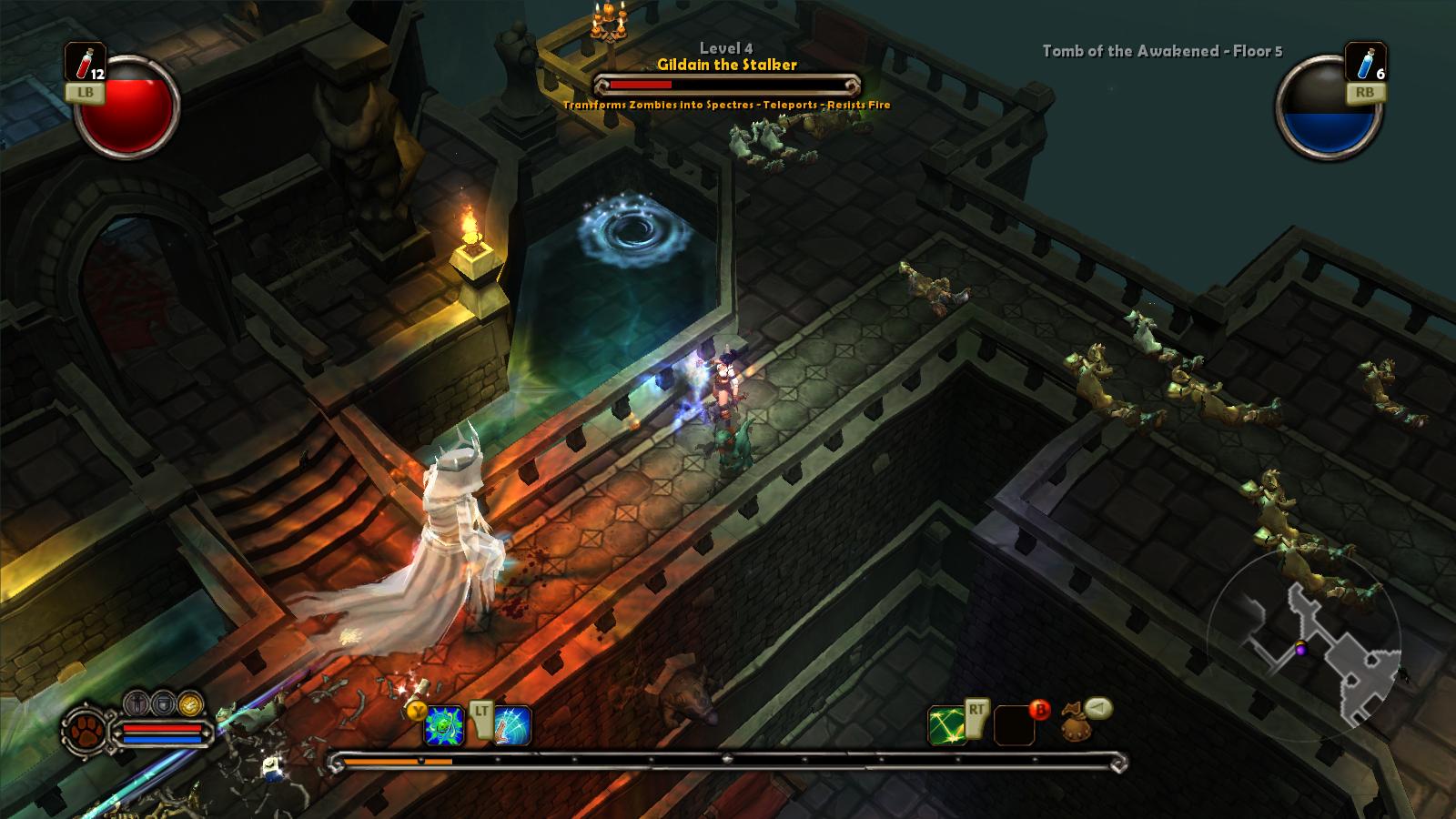Why you can trust 12DOVE
The release of the game on XBLA evolves the game subtly, though significantly. Comparing it to its PC sibling, we noticed that the console version takes steps to slightly rebuild the combat animations in the game, making them tighter and more natural. All of the character movement is mapped to the left stick with no faux-mouse cursors present whatsoever. With the smoother combat animations and a more common console controller layout, the action will just feel faster than pointing at a monster and clicking from left button to right on that gaming mouse. Skills and spells can be mapped to nearly all of the face and shoulder buttons. You can have 4 readily available, but swap to another set of four with the d-pad.
The flip side to this is an auto-targeting system implemented to make up for your lack of pointing at a specific enemy or loot drop. For distance attackers - mages and rogue classes, really – this isn’t a problem. By simply pointing the left stick in the direction of the nearest threat, you can usually get by pretty well with popping off foes from a safe distance or tossing in some crowd-controlling spells. Melee fighters, though, will sometimes have trouble actually hitting enemies. Especially with the camera zoomed all the way out, it can get tough to accurately judge the distance of you vs the target, resulting in a lot of whiffed swings until you notice that there aren’t any damage numbers floating above the enemy’s head.
The biggest problem, though, is when things get crowded. Since you’re using the same stick for movement as you are for targeting, it’s just about impossible to single out one monster to kill when they mob together. While this generally isn’t that big a deal with melee fighting since you can use the default crowd-controlling skill to clear a path, the other two classes have trouble taking down specific targets, making things a little aggravating.

Nearly everything else in the game has received some streamlining for functionality, for good or ill. The actual interface for the game is brilliant: health and magic meters are moved to the top corners of the screen and are more easily seen sitting a few feet from a television instead of a few inches from a computer monitor. Placing four active skills on the bottom of the screen makes it less busy and cluttered - an entire row of them would cloud your view on a TV. Item management and inventories are a mixed bag, though. Potions that refill health and magic now stack up to 99 and only take one slot in your inventory. Stronger potions are auto-selected for use with the bumper buttons, making healing a lot easier than the PC counterpart.
Gone, though, are large windows displaying your entire inventory or that of a vendor in the hub. Inventory is now represented by large lists with tabs for weapons, armor, items, etc. that are a pain to use. Turning on the option for comparing weapons or armor to what you already have equipped makes the lists pretty hard to read when they are full, and if you’re buying multiples of a certain item you may not be able to tell how many you’re buying or carrying if they’re lower down.

Strangely, there are also some graphical glitches and skipped frames from time to time. While this is really a minor gripe, the original Torchlight ran fairly well on a pretty low rent PC. The 360 certainly has the muscle capable of keeping the whole thing smooth.
The great things about Torchlight, though, are completely untouched. The main quest, though sort of short, can be supplemented with side quests and ancillary dungeons. An infinite dungeon opens after the main one ends for limitless loot collecting and bad guy smashing. New armor sets and a new quest-giving NPC appear in this version, too, which is just gravy.

The best feature about the game, one would argue, is the shared loot box. Find something that’s great but unusable for your class? Toss it in the box. Stumble upon a piece of a dedicated armor set that’s way below your level? In the box it goes. By having multiple characters played in tandem, Torchlight eschews the traditional concept of a New Game+ in that, by having your stronger characters filling the shared loot box with powerful low-level gear, they are making a super-powered second character (or third, or so on) after only a few levels. Retiring the old characters after the main quest is over and continuously passing on loot to new characters keeps the ball rolling. In theory, and if you’re really into min/maxingyour characters, this can make Torchlight last forever, even without the infinite dungeon.
With this in mind, though, it’s actually a bit disappointing that you can’t trade loot among your friend lists, which really would have added to the experience. While Torchlight is definitely a singular odyssey from a dungeon crawling perspective, some small multiplayer connectivity like this really would have added to the package.

But, yes, 1200 Microsoft points for Torchlight is a pretty darn good deal. Minor graphical issues and clunky inventory management aside, Torchlight for XBLA does a spectacular job of translating a PC dungeon hack-and-slasher to two analogue sticks and face buttons. Combat feels faster and smoother in your hands, and the minor additions peppered throughout like added quests and a new pet are nice bonuses. Torchlight will absolutely be one of the best downloadable games you’ve played in months, and maybe one of the best you’ll play all year.
Mar 15, 2011
More info
| Genre | Role Playing |
| Description | Torchlight is a single-player action-RPG that may be pretty similar to the original Diablo, but it gets many things right that Diablo did so very well that it's hard not to love it. |
| Platform | "PC","Xbox 360" |
| US censor rating | "Teen","Teen" |
| UK censor rating | "","" |
| Release date | 1 January 1970 (US), 1 January 1970 (UK) |

Indie developer behind the last Wii U and 3DS games says Switch 2 Mario Kart textures are "extremely telling that this system is significantly more powerful" than the Switch
Anime fans are raving over a new Netflix show, a slice-of-life hitman drama that's already shooting up the streamer’s charts
Lost Records: Bloom & Rage is bringing Don't Nod back to its Life is Strange roots, and nothing could excite me more
Most Popular


